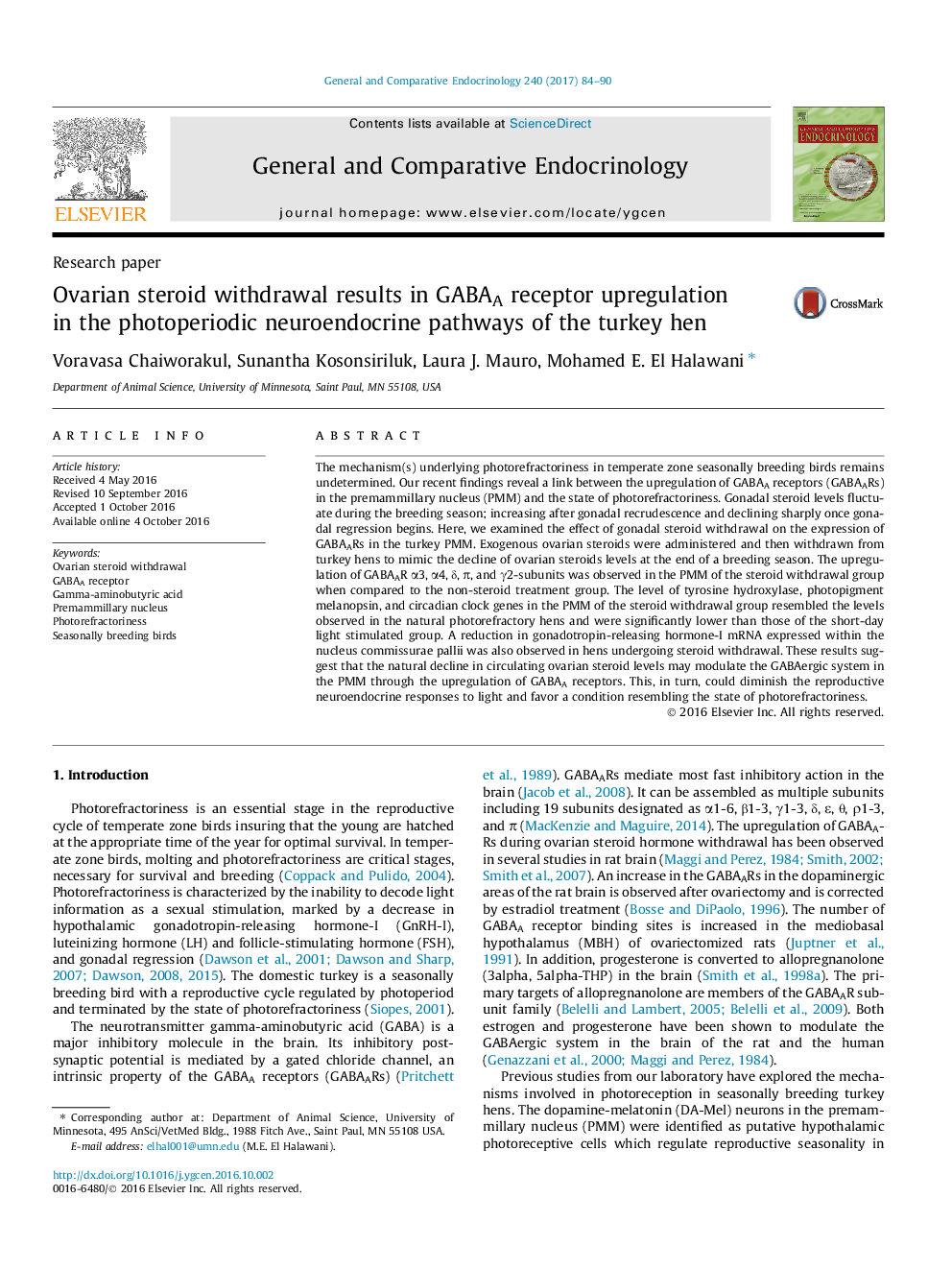| Article ID | Journal | Published Year | Pages | File Type |
|---|---|---|---|---|
| 8631529 | General and Comparative Endocrinology | 2017 | 7 Pages |
Abstract
The mechanism(s) underlying photorefractoriness in temperate zone seasonally breeding birds remains undetermined. Our recent findings reveal a link between the upregulation of GABAA receptors (GABAARs) in the premammillary nucleus (PMM) and the state of photorefractoriness. Gonadal steroid levels fluctuate during the breeding season; increasing after gonadal recrudescence and declining sharply once gonadal regression begins. Here, we examined the effect of gonadal steroid withdrawal on the expression of GABAARs in the turkey PMM. Exogenous ovarian steroids were administered and then withdrawn from turkey hens to mimic the decline of ovarian steroids levels at the end of a breeding season. The upregulation of GABAAR α3, α4, δ, Ï, and γ2-subunits was observed in the PMM of the steroid withdrawal group when compared to the non-steroid treatment group. The level of tyrosine hydroxylase, photopigment melanopsin, and circadian clock genes in the PMM of the steroid withdrawal group resembled the levels observed in the natural photorefractory hens and were significantly lower than those of the short-day light stimulated group. A reduction in gonadotropin-releasing hormone-I mRNA expressed within the nucleus commissurae pallii was also observed in hens undergoing steroid withdrawal. These results suggest that the natural decline in circulating ovarian steroid levels may modulate the GABAergic system in the PMM through the upregulation of GABAA receptors. This, in turn, could diminish the reproductive neuroendocrine responses to light and favor a condition resembling the state of photorefractoriness.
Related Topics
Life Sciences
Biochemistry, Genetics and Molecular Biology
Endocrinology
Authors
Voravasa Chaiworakul, Sunantha Kosonsiriluk, Laura J. Mauro, Mohamed E. El Halawani,
